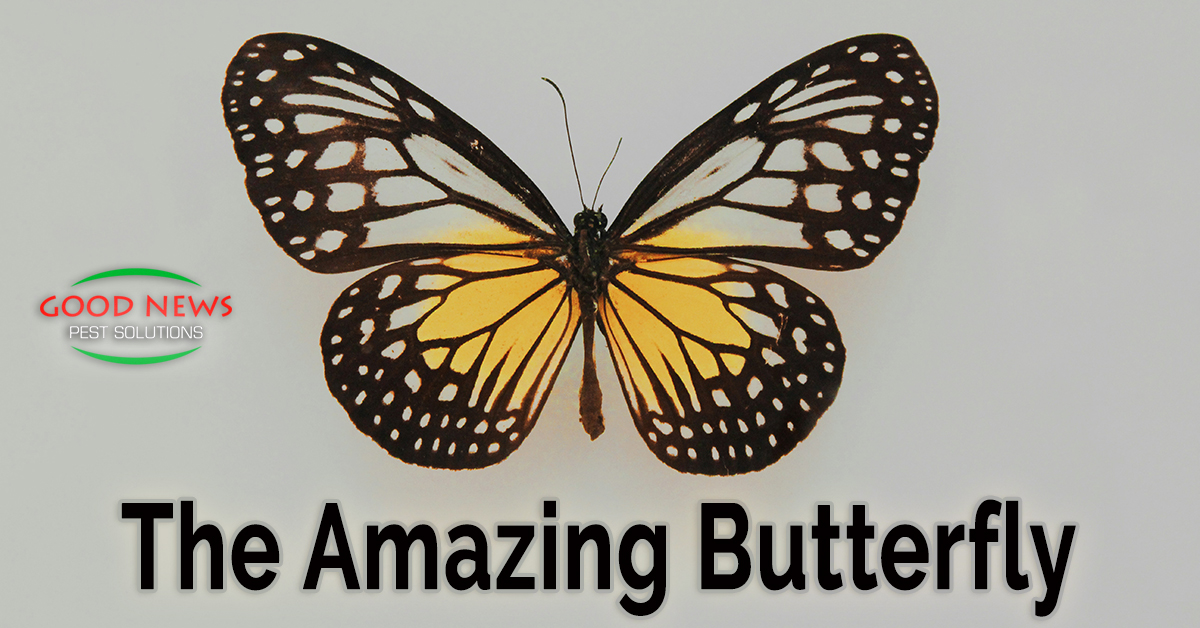
The Amazing Butterfly
There’s been a lot of change in the world in the last 250 million years. Continents have shifted, volcanoes have risen and gone dormant, dinosaurs have lived and died – and not just in the movies. The pyramids were built – both Egyptian and Mesoamerican; the Easter Island statues were built and partially crumbled; new species have been birthed of diversity and died off.
Change is one of the few constants in our world with one interesting exception. The genome of Lepidoptera – the insect family that includes butterflies and moths has not changed in at least 250 million years.
Scientists recently completed a new study that traced the genetic heritage of butterflies and moths. The very DNA that makes them what they are, just as ours makes us human and a dog’s makes her a canine, has remained almost entirely unchanged. Yet, we can see that there is a huge diversity in the Lepidoptera family.
Bridging Biodiversity
There are around 180,000 species in the Lepidoptera family, making up approximately 10% of all living creatures on the planet. And yet all but a few share the same 31 chromosome pairs of DNA. The exceptions have 90 pairs of chromosomes. You may recall from high school biology that humans have 23 pairs.
So how did nearly 200-thousand variations emerge from a single set of DNA? And why haven’t those likenesses changed in 250 millennia? That’s what scientists are now looking to understand – with the hope that getting a handle on butterflies’ combined similarities and differences can help us improve the survival rate for other species – and the planet itself.
In the past 115 years nearly half of all living species on our planet have decreased or gone extinct. Some are smaller, primarily regional, animals and fish. Others are far more widespread. As of this year, there are more than 157,000 species on The International Union for Conservation of Nature’s Red List. At least 44,000 of those are on the verge of extinction.
Regardless of who or what is to blame for this issue, it is a very real problem.
Biodiversity is a popular catchphrase in the conservation community these days. Simply put, biodiversity is the variety of all living things and their interactions – how they live and how we all interact.
But that definition sometimes masks a larger problem. The lack of biodiversity, the steady decline of the populations of plants, animals, etc., is causing changes across the globe. And while some may be seen as positive, in general, the loss of large groups of God’s creation has serious consequences and shows a failure on our part to be stewards of that creation.
Life… Finds a Way
But just as butterflies are symbolic of rebirth & transformation, the recent genetic findings could lead to a renaissance in protecting the living beings of the earth – if not rebirthing extinct ones.
Over the past several years, researchers from dozens of countries studied the DNA of more than 2,000 species of butterflies. They used this information to build the world’s largest butterfly tree of life. Using the data tree, they were then able to pinpoint what they believe is the time butterflies began diverging from moths, some 100 million years ago. But they also discovered where.
In that era, mid-Pangea – during the time when a single continent diverged into our current global layout – butterflies first emerged in Central and western North America, approximately where parts of Texas, Louisiana, and our own Gulf Coast of Florida would one day be located.
From there, they spread across nearly all the lands and shifting continents – even making it as far as Australia. Strangely, much of what we now call the European Union was the last to be populated with butterflies.
By the time the dinosaurs died off, nearly all the modern species of butterflies were established. Seemingly by design, each of them took on the task of pollinating and thus propagating different groups of flowering bean plants.
While bees eventually took over the bulk of pollinating duties, the research notes that butterflies were the first pollinators for many staple plants.
Pollination & Potential Prognostication
As we’ve mentioned before, one of the scariest prospects facing our current world is the seemingly rapidly accelerating die off of our primary pollinators – honey bees. The USDA reports honey bees pollinate 130 different crops, amounting to 15 billion dollars of food every year. Unless we find – or build – alternative pollinators, substantial bee loss could become catastrophic.
But the genetic research into Lepidoptera may hold the key to that solution as well. Butterflies were primary pollinators once before. In some cases, they still could be, taking over for the dwindling bees, or could possibly be trained to resume their earliest purpose.
That’s only a partial solution, but the intention of the scientists from the Wellcome Sanger Institute and our own Florida Museum of Natural History is to dig deeper into why the butterfly genetics haven’t changed when so many others have over the centuries.
The intent is to remove many or most species from the endangered list. The scientists – and others studying their research – can utilize that information to help specific species like the honey bee adapt better to the various changes in habitat, weather, and other factors.
As for the honeybees and the butterflies, one solution to the problem is to eliminate certain pesticides that have been deemed lethal for the pollinators. We’ve spent more than 30 years working to bring our customers the most effective and safest pest solutions on the planet.
While it may seem to be cheaper to spray harsh chemicals to cut back on nuisance insects, we believe there is much more value in protecting our clients’ families, pets, and the planet itself. And it turns out, it isn’t even expensive. To find out more about our Go Green Perimeter Plus program or any of our green solutions, please just give us a call!
« Back to Blog
Proudly Serving
Sun City Center, Ruskin, Palmetto, Parrish, Ellenton, Bradenton, Anna Maria, Holmes Beach, Bradenton Beach, Longboat Key, Lakewood Ranch, University Park, Myakka City, Sarasota, Siesta Key, Osprey, Nokomis, Casey Key, Venice, Englewood, North Port, Port Charlotte, Punta Gorda, Arcadia
Things You Can Do
Pay Your Bill Online
Leave Us a Review
Request a Free* Termite Inspection
Stop Mosquito Bites
Get Rid of Rodents
Get a Termite Damage Warranty
Get Pest Control for Your Attic
Get Pest Control for Your Business Request Prayer
Corporate Address
1080 Enterprise Court, Ste A
North Venice, FL 34275
Call Now: (941) 412-9610
Text: (941) 412-9610
Fax: (941) 412-0080
